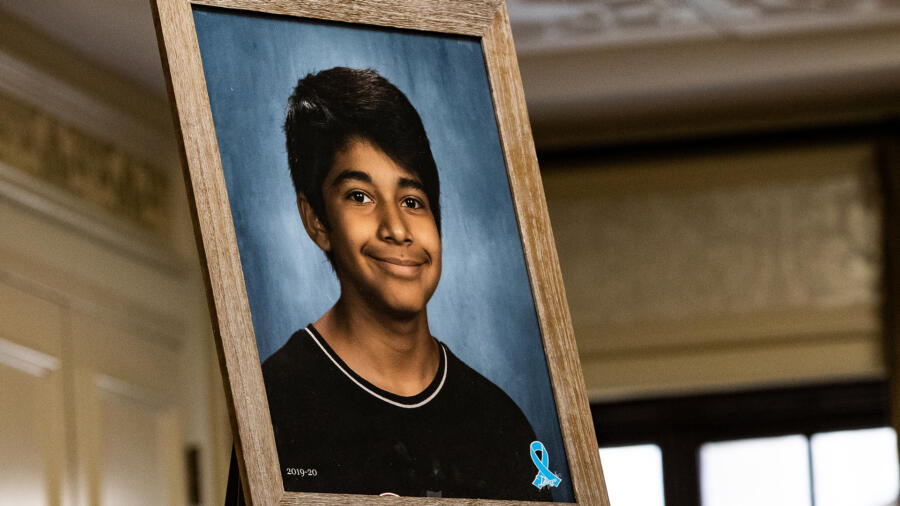Bullying isn’t just hurtful—it can be fatal. While often dismissed as “kids being kids,” relentless bullying can escalate into violence, suicide, or even murder. Around the globe, headlines continue to reveal devastating stories where bullying led to irreversible tragedy. These aren’t isolated incidents. They’re part of a growing crisis demanding attention, accountability, and action.
When Bullies Push Too Far—and Lives Are Lost
Some bullying victims suffer quietly. Others, tragically, never get the chance to speak again.
Take Reena Virk, a 14-year-old from British Columbia. Eager to belong, she trusted the wrong crowd. Instead of friendship, she endured physical humiliation and assault. Her peers stubbed a cigarette on her forehead, beat her senseless, and then drowned her when she tried to escape. That November night in 1997 changed Canadian society forever.
Yet, more than two decades later, similar horrors continue.
In 2019, Diego Stolz, a 13-year-old orphan in California, was sucker-punched by two classmates. The blow slammed him into a concrete pillar. He never woke up. Doctors pronounced him brain-dead days later. Despite the fatal assault, the attackers received community service and probation.
That same year, in Toronto, 14-year-old Devan Selvey faced a pack of bullies at school. He ran toward his mother’s car, seeking safety. Instead, he was stabbed to death, just feet away from her. His cries for help went unheard until it was too late.
These cases share something chilling in common—clear warning signs that adults ignored or minimized.
When the Victims Snap: The Rise of Retaliation Violence
In some cases, bullied students don’t just break down—they fight back with lethal force.
Consider Noel Estevez, a 14-year-old from New York who endured months of torment. On June 18, 2014, his fear transformed into rage. He stabbed his former friend and bully, Timothy Crump, in the chest. Crump died on the street, and Estevez faced second-degree manslaughter charges.
Then there’s Abel Cedeno, 18, who had been subjected to years of homophobic slurs and harassment. On September 27, 2017, Cedeno brought a switchblade to school. A fight broke out. Two students were stabbed—one fatally. Cedeno claimed the victims weren’t his bullies, but the years of abuse had blurred all boundaries. He was sentenced to 14 years in prison.
And we cannot forget Eric Smith, arguably one of the most unsettling cases. At only 13, Smith lured 4-year-old Derrick Robie into a secluded area. What followed was a brutal killing—strangulation, beatings, and sexual assault. Years later, Smith admitted that constant bullying for his red hair, glasses, and small size drove him to violence. “I became the bully I hated,” he confessed during a parole hearing.
Are Schools Failing Our Children?
Every U.S. state has anti-bullying laws, but are they effective?
The National Crime Victimization Survey reported that 22% of students aged 12–18 experienced bullying in 2019. Meanwhile, only a fraction of schools reported those incidents. Why the gap?
“Schools are reluctant to involve police,” says law professor Elizabeth Jaffe. “They fear publicity and liability.”
Even when schools take action, the disciplinary measures often fall short. A suspension doesn’t address the trauma, nor does it reform the aggressor. According to sociology professor Jessie Klein, too many schools rely on minimal intervention. “Kids repeatedly say, ‘My school did nothing,’” she explains.
And when no one listens? Some victims turn violent, while others become victims again—fatally.
The New Battleground: Cyberbullying
Classrooms are no longer the only war zones. In fact, the internet has magnified bullying’s reach.
In 2019, 16% of high school students reported cyberbullying. Unlike face-to-face harassment, digital abuse happens 24/7, often anonymously. Platforms like Instagram, TikTok, and Snapchat allow bullies to target victims even at home—where they should feel safe.
What’s worse? Legal protections remain murky, and schools often claim they lack jurisdiction over online conduct.
Breaking the Cycle: What Needs to Change?
Experts argue that the solution lies in early intervention, not just punishment. Schools need to:
- Foster empathy and emotional intelligence
- Train teachers to identify and act on subtle signs
- Involve parents, therapists, and law enforcement when needed
- Provide safe spaces and peer support groups
“Right now,” says Klein, “there’s no love in most school environments. It’s something of a war zone.” That culture must change.
Otherwise, the pattern will repeat. Victims will remain unheard. Bullies will stay emboldened. And more lives—young, promising, and full of potential—will be lost.
Frequently Asked Questions
What are some real cases where bullying led to death?
Reena Virk, Diego Stolz, and Devan Selvey all died as a result of extreme bullying or school violence.
Can bullying cause victims to commit murder?
Yes. Cases like Noel Estevez and Abel Cedeno show how severe bullying can lead victims to retaliate violently.
How many students experience bullying?
According to 2019 data, 22% of U.S. students aged 12 to 18 reported being bullied at school.
Are schools legally required to stop bullying?
All U.S. states have anti-bullying laws, but enforcement varies greatly, and schools often fall short in protecting victims.
What’s the difference between bullying and cyberbullying?
Cyberbullying happens online and often continues outside school hours, making it harder to monitor and stop.
What can schools do to prevent bullying?
Schools can improve safety by fostering empathy, training staff, involving families, and addressing bullying early and seriously.

